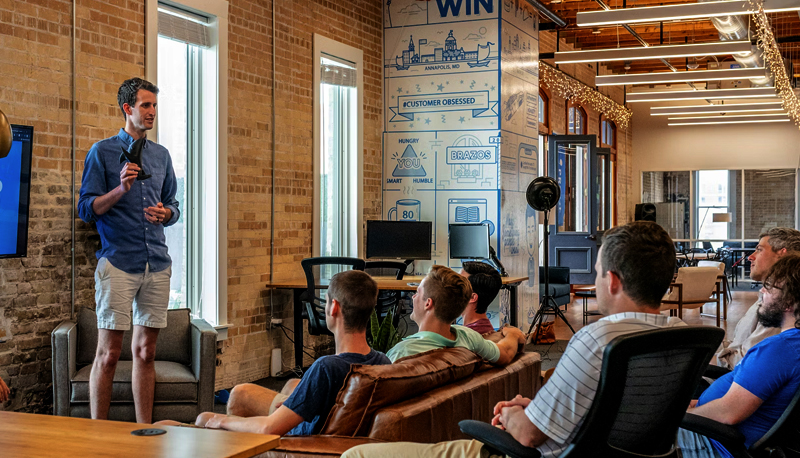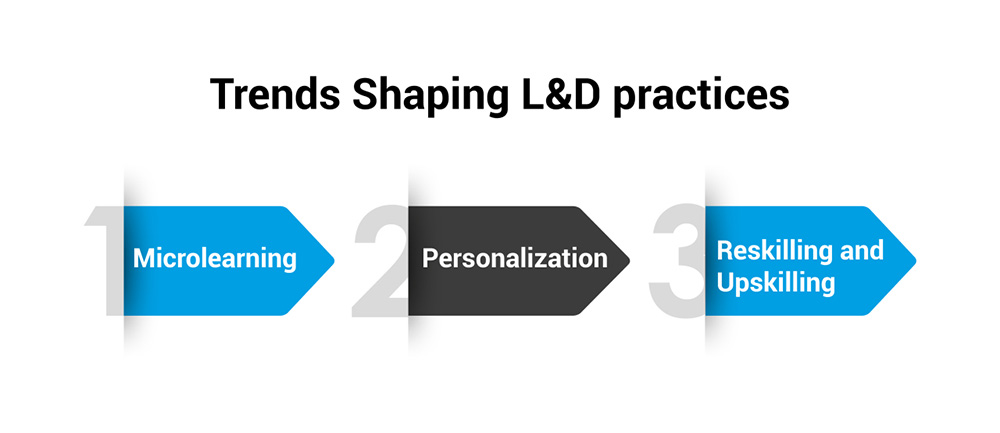
Learning and development (L&D) has always played a crucial role in human resources (HR), helping organizations enhance their employees' skills and maximizing workforce potential. However, rapid technological advancements and changing workplace dynamics have thrown the L&D function into a swirl of evolution. As workplaces get digitized at lightning speed and new-age skills like data literacy, design-thinking, and emotional intelligence gain prominence, training and developing employees is no more a choice but a necessity for businesses to stay relevant.
This has majorly ramped up the importance of L&D in the HR landscape. With learning becoming a continuous process rather than one-time classroom events, L&D professionals are adopting more strategic and tech-driven approaches to devise robust learning solutions. They are weaving learning into the fabric of everyday work and leveraging digital tools like microlearning, virtual reality, and artificial intelligence to light up new possibilities for workforce education. The future of L&D lies in driving highly personalized, on-demand, and immersive learning experiences for employees.
To effectively prepare their workforce for the jobs and skills of tomorrow, organizations must thoughtfully implement strategic L&D programs. They need to carefully assess emerging skill requirements, identify current gaps, and develop comprehensive learning roadmaps for employees. Role-specific and microlearning paths focusing on soft skills, technological literacy, and lifelong learning mindsets can help workers upgrade themselves continuously according to changing market needs.
L&D professionals also have a huge role to play in envisioning future skills and translating them into actionable training content. By keeping abreast of industry trends through research and partnerships, they can accurately forecast innovative competencies and design future-ready learning curriculums. Equal importance should be given to reskilling/upskilling current employees as well as preparing new joiners with the right baseline skills. Strategic L&D acts as the catalyst to build workforces that are always learning and always employable.
Technologies like augmented reality (AR), virtual reality (VR), artificial intelligence (AI), and machine learning are radically transforming how learning is designed and delivered. Immersive VR/AR experiences can help employees gain hands-on expertise on complex subjects without real-world risks. AI and machine learning are enabling hyper-personalized recommendations of learning resources tailored to individual profiles, strengthening motivation and retention.
Advanced analytics of learning data also allows HR teams to closely monitor skills proficiency, knowledge gaps, career aptitudes, and interests of each learner. This ensures continuous optimization of learning outcomes through personalized nudges and interventions. L&D leaders must closely work with internal IT teams to effectively leverage such cutting-edge technological enablers to reimagine workforce education. They should be pushing the boundaries of experiential and tech-driven learning models to deeply engage digital native employees.
As the only constant in the VUCA (Volatility, uncertainty, complexity, and ambiguity) world of work is changing, promoting a culture of continuous learning has become indispensable for organizations. Employees must move beyond the mindset of one-time training programs to lifelong learners who take ownership of upgrading their capability portfolio. Towards this end, L&D needs to shift from event-based learning interventions to providing continuous skilling support through varied resources and solutions.
Digital libraries of micro-courses, online communities, social learning, mentoring, and more informal experiences must complement structured programs. The success of strategic L&D also hinges on driving organizational-wide commitment and buy-in for continuous talent development. Leadership support, rewards, and Recognition for learners, as well as linking learning metrics to performance reviews, can help foster a pervasive culture where learning is the way of work. With employees learning habitually, businesses reap the ongoing dividends of highly skilled, innovative, and high-performing workforces.
A number of exciting new trends are taking shape in the learning and development sphere. Organizations are looking to boost their L&D practices by embracing microlearning approaches and personalizing development plans for employees. They are also honing in on upskilling and reskilling initiatives to drive innovation.

While L&D spearheads workforce development, its role has expanded to drive wider HR transformation as well. As strategic partners, L&D professionals must closely collaborate with other Talent Management Practitioner to align business goals with people strategies and solutions. For instance, they may partner with recruitment teams to identify baseline skills for job profiles or work with compensation teams to link learning achievements with appropriate rewards.
More importantly, embedding continuous feedback and reskilling mechanisms can help HR transition to high-impact roles as changemakers within organizations. By acting as the fulcrum of change through strategic employee education, HR gets future-proofed to effectively tackle the complex people challenges of tomorrow. With their finger on the pulse of changing skill requirements, L&D leaders are perfectly primed to guide overall HR transformation, keeping business realities in mind. The future greatly depends on how seamlessly they integrate learning solutions with broader people-centered strategies.

CredBadge™ is a proprietary, secure, digital badging platform that provides for seamless authentication and verification of credentials across digital media worldwide.
CredBadge™ powered credentials ensure that professionals can showcase and verify their qualifications and credentials across all digital platforms, and at any time, across the planet.

Please enter the License Number/Unique Credential Code of the certificant. Results will be displayed if the person holds an active credential from TMI.